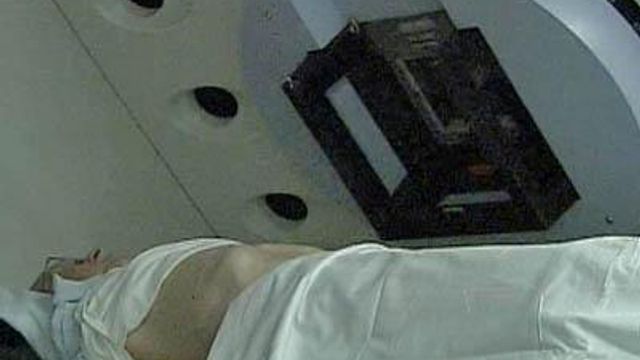Radiation Treatment Targets Tumors
A new therapy combines several radiation beams to treat head and neck tumors more effectively.
Posted — UpdatedIntensity-modulated radiation therapy, or IMRT, is used to target head and neck tumors more effectively than other therapies, said Dr. Scott Sailer, a radiation oncologist with Wake Radiology.
"You may use five to seven beams, and then each beam is individually modulated," Sailer said.
IMRT is also used to treat cancers in the prostate, brain, lung, liver and gynecological tumors, he said.
Before treatment begins, doctors combine images of the tumor from computed tomography (CT), magnetic resonance (MR) and positron emission tomography (PET) scans, and they customize a map of the treatment area.
Frank Stancil underwent IMRT after a CT scan and biopsy revealed a problem on the side of his neck was locally advanced cancer of his left tonsil that had spread to a lymph node.
"They needed to operate on my throat. They'd take out most of my throat, or either I could have the radiation and chemo," Stancil said.
With IMRT, Sailer said, radiation was concentrated on the tumor so it would miss the parotid glands, which secrete saliva.
Stancil had intense, five-day-a-week IMRT treatments over six weeks, as well as chemotherapy. Two years later, he still isn't completely healthy, but the cancer is gone.
"I've got my voice, and I can swallow. It's all coming back. My taste buds are not all back yet," he said. "I'm just blessed that I'm just as close to normal as you can get."
• Credits
Copyright 2024 by Capitol Broadcasting Company. All rights reserved. This material may not be published, broadcast, rewritten or redistributed.





